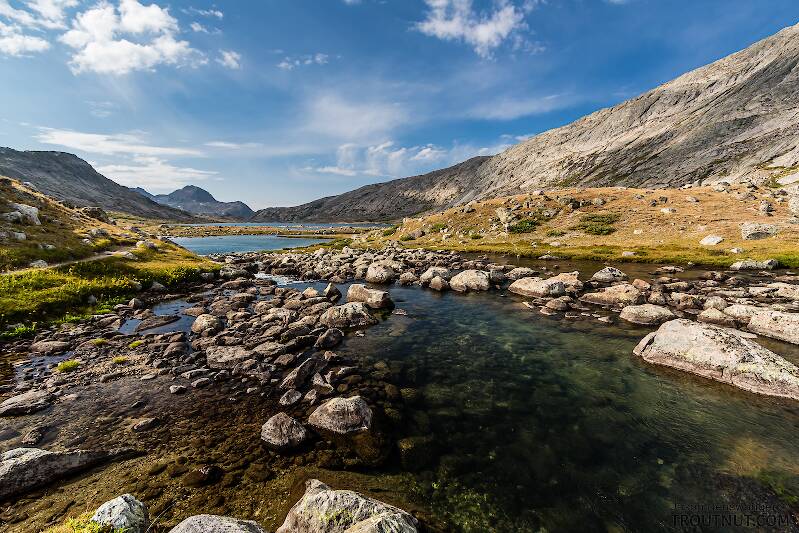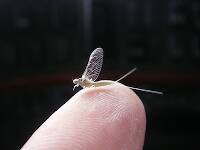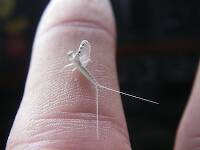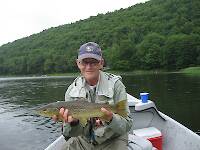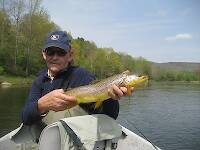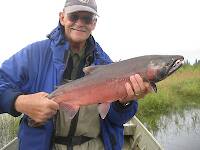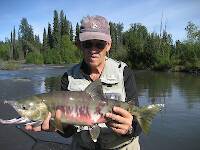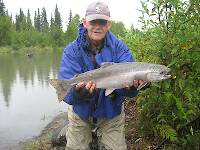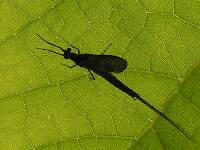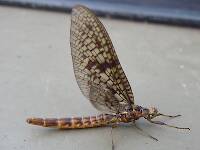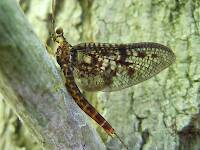
Salmonflies
Pteronarcys californica
The giant Salmonflies of the Western mountains are legendary for their proclivity to elicit consistent dry-fly action and ferocious strikes.
Featured on the forum

This one seems to tentatively key to Holocentropus, although I can't make out the anal spines in Couplet 7 of the Key to Genera of Polycentropodidae Larvae nor the dark bands in Couplet 4 of the Key to Genera of Polycentropodidae Larvae, making me wonder if I went wrong somewhere in keying it out. I don't see where that could have happened, though. It might also be that it's a very immature larva and doesn't possess all the identifying characteristics in the key yet. If Holocentropus is correct, then Holocentropus flavus and Holocentropus interruptus are the two likely possibilities based on range, but I was not able to find a description of their larvae.

Troutnut is a project started in 2003 by salmonid ecologist Jason "Troutnut" Neuswanger to help anglers and
fly tyers unabashedly embrace the entomological side of the sport. Learn more about Troutnut or
support the project for an enhanced experience here.
By Troutnut on June 26th, 2019
Knowing that early morning was unlikely to be very productive during runoff, we took advantage of the cool morning weather to hike five miles farther up the trail to the Upper Slough Creek campground, where we would stay for the next two nights. We made good time and were on the water there near noon.
We soon realized that the slow action at the end of the previous night was not caused by the storm, but was instead the norm. Most pools produced no strikes, and when there was action, there were frequently several fish in the same place that didn't seem like an especially spectacular holding lie. As we walked upstream along a deep riffle, everything quickly began to make sense: many of the fish were still spawning in the riffles or staging nearby. Fish actively spawning or on their redds steadfastly ignored all sorts of flies, but those staging, moving through, or involved in territorial disputes were more willing.
I landed the first fish of the day, which was also my first sizable Yellowstone Cutthroat:
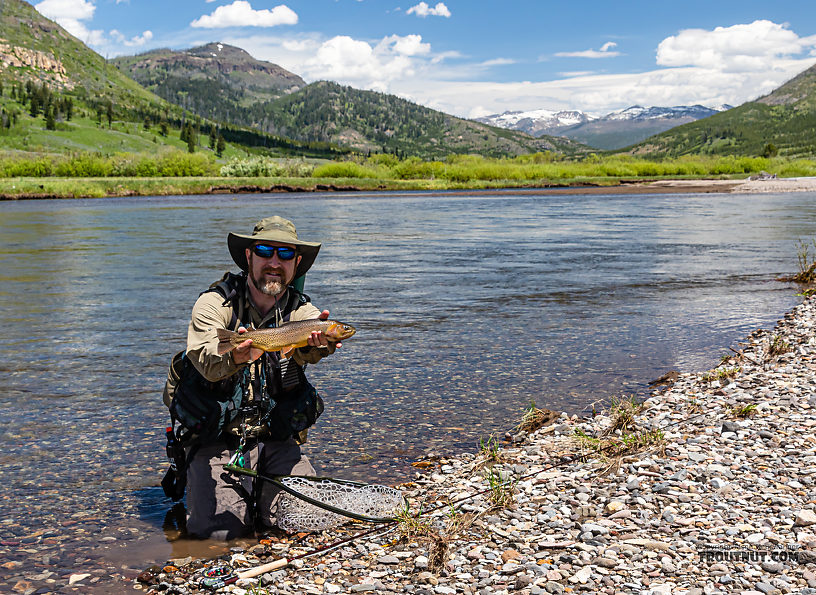
It certainly helped that we had figured out what the fish were up to, but it was still tricky fishing: most riffles, like most pools, were devoid of fish, and increasing cloud cover made spotting them in the riffles more and more difficult as the day went on. I tried a variety of big, articulated streamers, mostly with the rear hook clipped off to comply with Yellowstone's single-hook rule. The fish were striking short and I missed the vast majority of my opportunities because they didn't get the hook; apparently this is a common behavior of Yellowstone Cutthroat. My friend was doing much better with a Sculpzilla (or "Godzilla Sculpin" as it was termed by the trademark-sensitive fly company), which has as its only hook a stinger located as far toward the back of the fly as possible.
After missing a ridiculous number of fish, I finally got the memo and switched to a Sculpzilla myself, which would be the go-to fly for the rest of the trip. In the future I'll carry a greater variety of streamers with far-back stinger hooks for such situations. I ended up landing four good fish for the day after covering a few miles of water; my friend caught well over twice that, having used the right fly in the first place. Most fish were associated with spawning habitat but not actively spawning, but a few came from more typically promising pools as well.
Despite some early frustration with my flies, the day was awesome, fishing in solitude through wide-open meadows rimmed by snow-capped peaks and dotted with the occasional bison, elk, deer, and the first badger either one of us had seen close-up in the wild.
We soon realized that the slow action at the end of the previous night was not caused by the storm, but was instead the norm. Most pools produced no strikes, and when there was action, there were frequently several fish in the same place that didn't seem like an especially spectacular holding lie. As we walked upstream along a deep riffle, everything quickly began to make sense: many of the fish were still spawning in the riffles or staging nearby. Fish actively spawning or on their redds steadfastly ignored all sorts of flies, but those staging, moving through, or involved in territorial disputes were more willing.
I landed the first fish of the day, which was also my first sizable Yellowstone Cutthroat:

It certainly helped that we had figured out what the fish were up to, but it was still tricky fishing: most riffles, like most pools, were devoid of fish, and increasing cloud cover made spotting them in the riffles more and more difficult as the day went on. I tried a variety of big, articulated streamers, mostly with the rear hook clipped off to comply with Yellowstone's single-hook rule. The fish were striking short and I missed the vast majority of my opportunities because they didn't get the hook; apparently this is a common behavior of Yellowstone Cutthroat. My friend was doing much better with a Sculpzilla (or "Godzilla Sculpin" as it was termed by the trademark-sensitive fly company), which has as its only hook a stinger located as far toward the back of the fly as possible.
After missing a ridiculous number of fish, I finally got the memo and switched to a Sculpzilla myself, which would be the go-to fly for the rest of the trip. In the future I'll carry a greater variety of streamers with far-back stinger hooks for such situations. I ended up landing four good fish for the day after covering a few miles of water; my friend caught well over twice that, having used the right fly in the first place. Most fish were associated with spawning habitat but not actively spawning, but a few came from more typically promising pools as well.
Despite some early frustration with my flies, the day was awesome, fishing in solitude through wide-open meadows rimmed by snow-capped peaks and dotted with the occasional bison, elk, deer, and the first badger either one of us had seen close-up in the wild.
Photos by Troutnut from Slough Creek in Wyoming
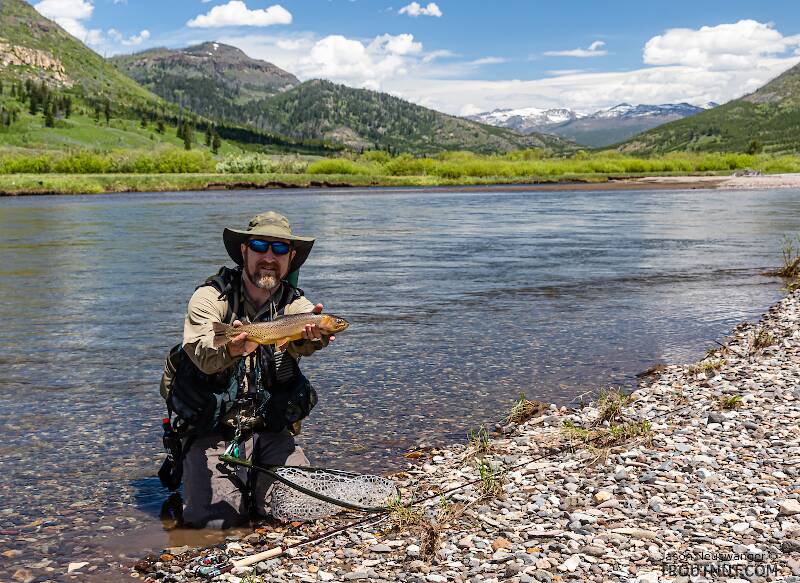
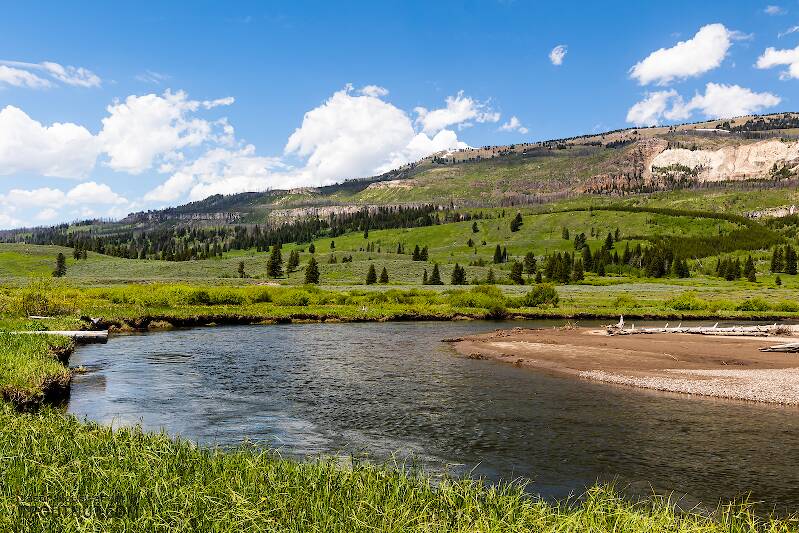
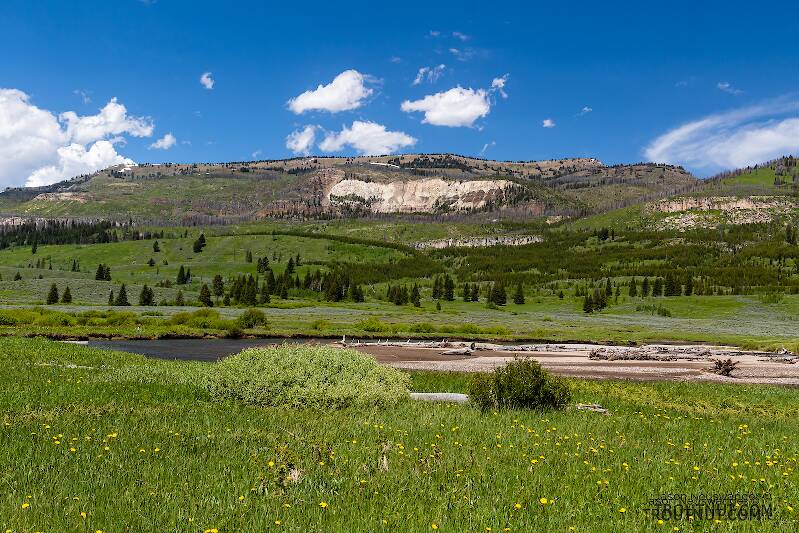
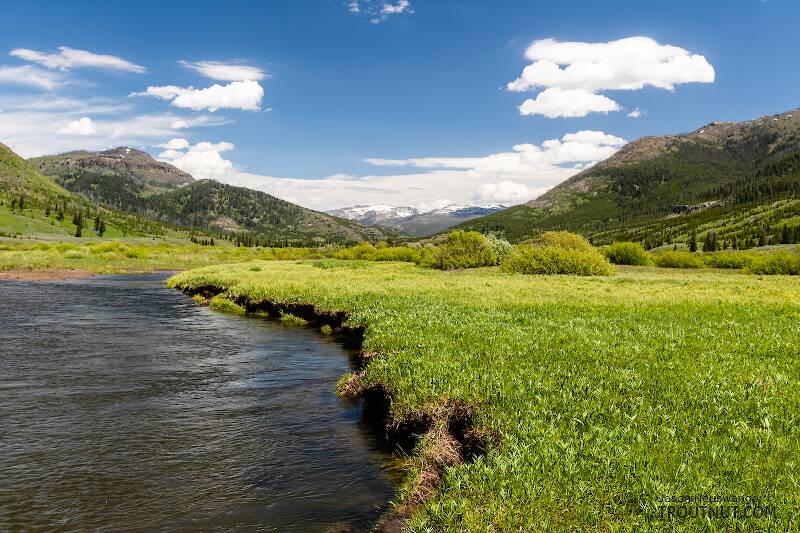
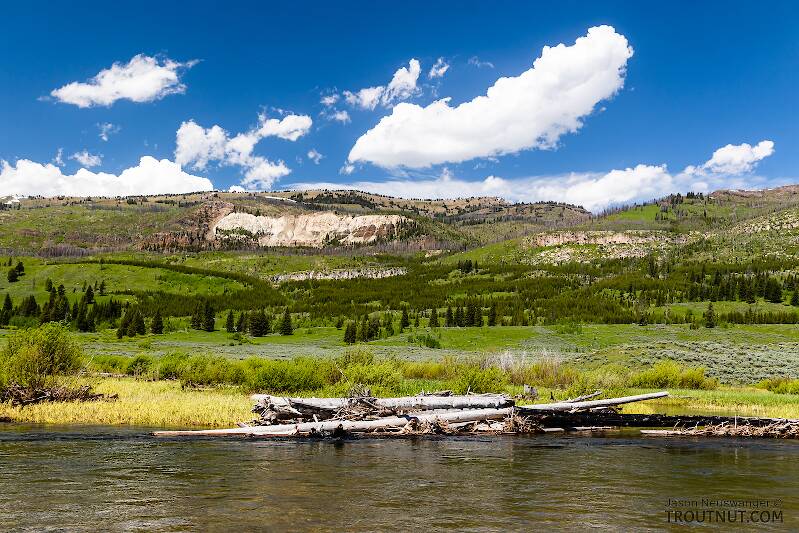
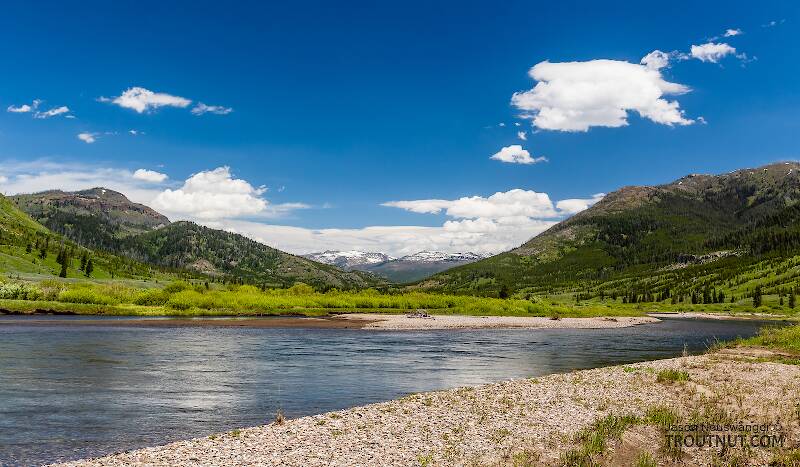
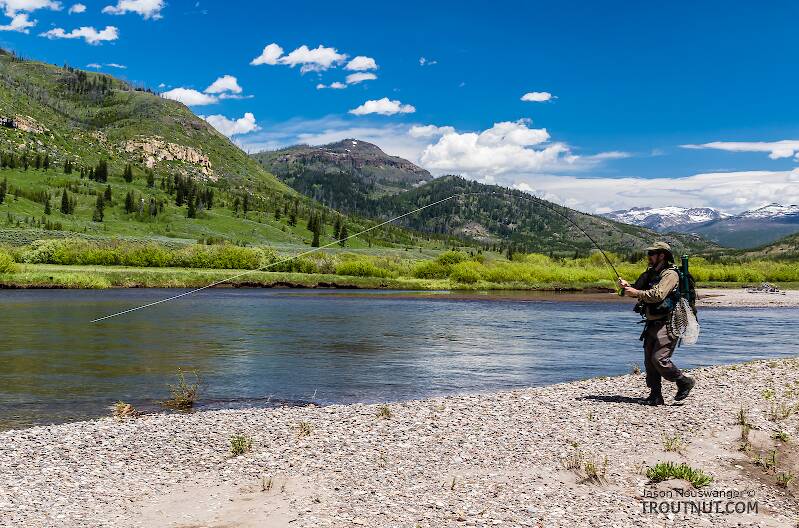
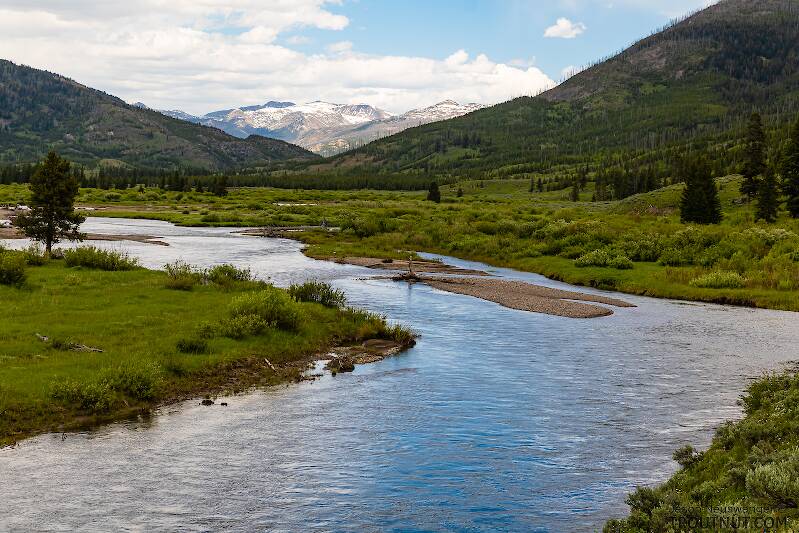
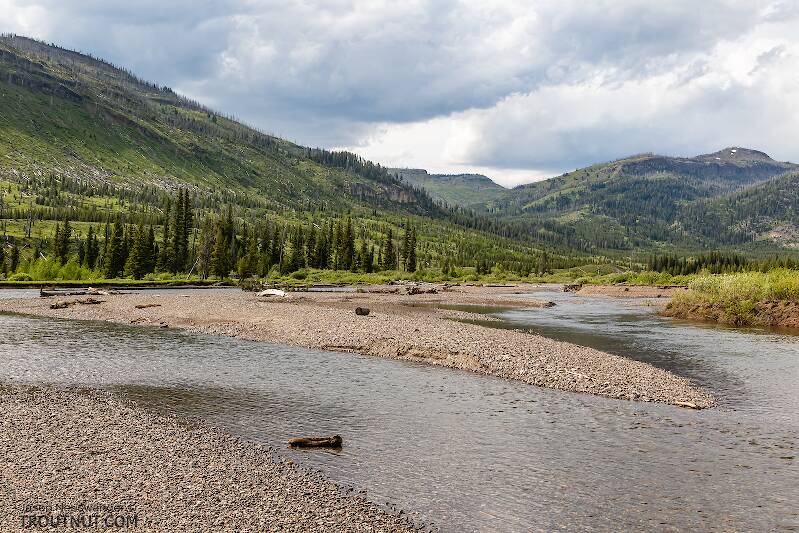
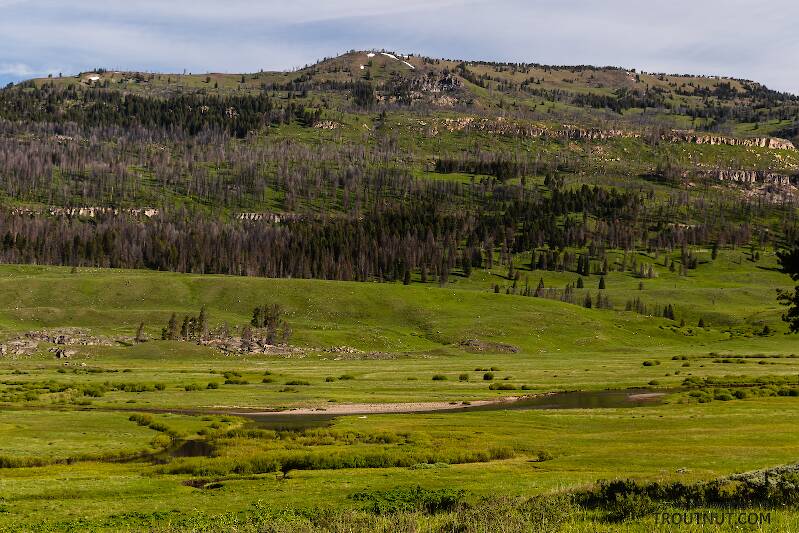
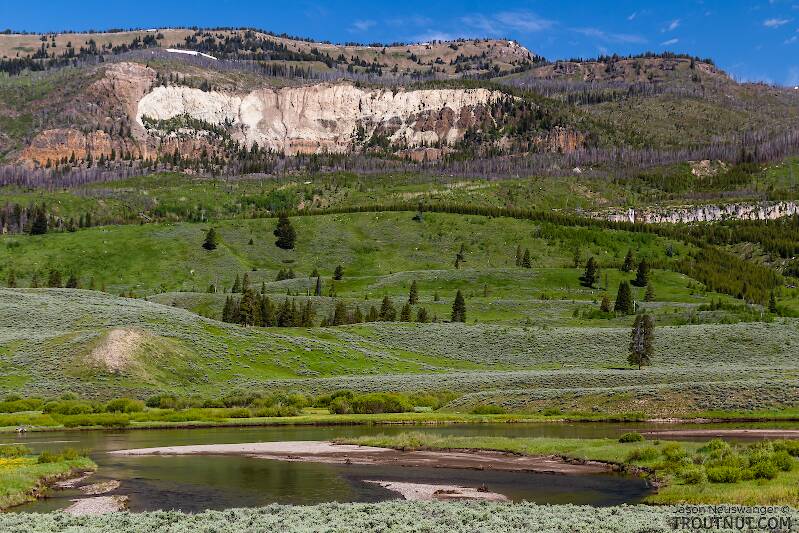
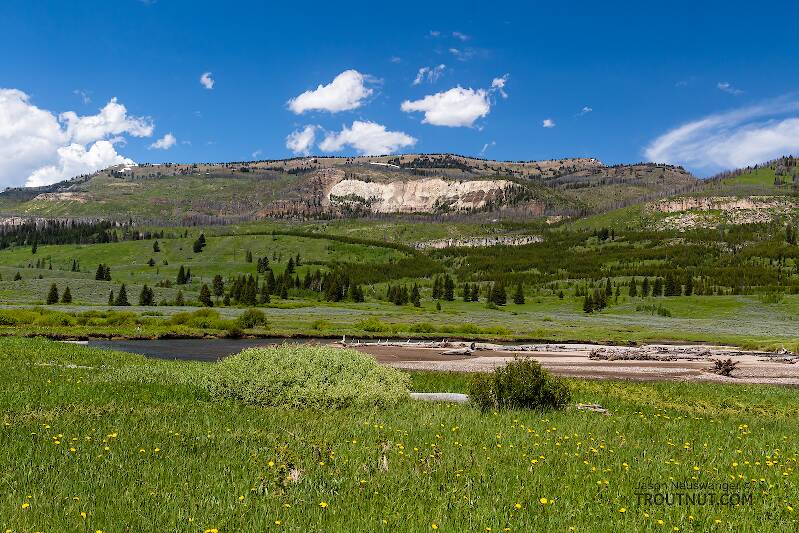
Quick Reply
Related Discussions
Topic
Replies
Last Reply
Re: Salmonfly question for you westerners
In the Stonefly Species Pteronarcys californica by Troutnut
In the Stonefly Species Pteronarcys californica by Troutnut
7
Jun 4, 2016
by Chipper
by Chipper
10
Jul 27, 2008
by Phillyfired
by Phillyfired
3
Aug 4, 2007
by Martinlf
by Martinlf

